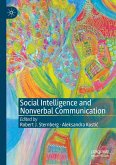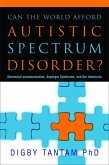Speech and culture most evidently differentiate people from animals. Yet, the biological precursors to verbal communication exists in animal communication and obvious links have been found between human and animal nonverbal vocal communication. In Nonverbal Vocal Communication specialists from several disciplines review the present knowledge on neural substrates of vocal communication, on primate vocal communication, and on precursors and prerequisites of human speech. Among other points, the book illustrates that animal vocal signals appear to be much more complex than mere expressions of effective states. The nonverbal communication data is complemented by comparative and developmental research of the preverbal period of human vocal communication. The book provides a forum for consideration of phylogenetic and ontogenetic continuities and precursors of verbal communication that will allow for critical interpretation of speech acquisition, by a wide range of workers.
Table of contents:
Part I. Systems of Communication: Introduction and Review U. Jurgens; 1. Evolution of Vocal Communication D. Ploog; 2. On the Neurobiology of Vocal Communication U. Jurgens; 3. Vocal Affect Expression as Symbol, Symptom and Appeal K. R. Scherer; Part II. Noncategorical and Categorical Symbols in Primate Communication: Introduction and Review K. Bard; 4. Animal Signals: Motivational, Referential, or Both? P. Marler, Ch. Evans and M. Hauser; 5. Noncategorical Vocal Communication in Subhuman Primates: The Example of Common Marmoset Phee Cells J. D. Newman and P. Goedeking; 6. Categorical Vocal Signaling in Subhuman Primates M. J. Owren, R. M. Seyfarth and S. L. Hopp; 7. Vocal Development in Nonhuman Primates D. Symmens and M. Biben; Part III. Development of Nonverbal Vocal Signals in Humans: Part I. From Cry to Speech Sounds: Introduction and Review R. Eilers; 8. No Language But a Cry B. M. Lester and C. Z. Boukydis; 9. Development of Vocal Signaling in Human Infants: Toward a Methodology for Cross-Species Comparisons D. K. Oller and R. E. Eilers; 10. Disorders of Vocal Signaling in Children H. Amorosa; Part IV. Development of Nonverbal Vocal Signals in Humans: Part II. Interactive Support in Preverbal Dialogues: Introduction and Review R. Eilers; 11. Early Ontogeny of Reciprocal Vocal Communication in Precanonical Parent-Infant Interactions M. Papousek; 12. Didactic Interactions: Intuitive Parental Support of Vocal and Verbal Development in Human Infants H. Papousek and M. Bornstein; 13. Meaningful Melodies in Mothers' Speech to Infants A. Fernald.
Table of contents:
Part I. Systems of Communication: Introduction and Review U. Jurgens; 1. Evolution of Vocal Communication D. Ploog; 2. On the Neurobiology of Vocal Communication U. Jurgens; 3. Vocal Affect Expression as Symbol, Symptom and Appeal K. R. Scherer; Part II. Noncategorical and Categorical Symbols in Primate Communication: Introduction and Review K. Bard; 4. Animal Signals: Motivational, Referential, or Both? P. Marler, Ch. Evans and M. Hauser; 5. Noncategorical Vocal Communication in Subhuman Primates: The Example of Common Marmoset Phee Cells J. D. Newman and P. Goedeking; 6. Categorical Vocal Signaling in Subhuman Primates M. J. Owren, R. M. Seyfarth and S. L. Hopp; 7. Vocal Development in Nonhuman Primates D. Symmens and M. Biben; Part III. Development of Nonverbal Vocal Signals in Humans: Part I. From Cry to Speech Sounds: Introduction and Review R. Eilers; 8. No Language But a Cry B. M. Lester and C. Z. Boukydis; 9. Development of Vocal Signaling in Human Infants: Toward a Methodology for Cross-Species Comparisons D. K. Oller and R. E. Eilers; 10. Disorders of Vocal Signaling in Children H. Amorosa; Part IV. Development of Nonverbal Vocal Signals in Humans: Part II. Interactive Support in Preverbal Dialogues: Introduction and Review R. Eilers; 11. Early Ontogeny of Reciprocal Vocal Communication in Precanonical Parent-Infant Interactions M. Papousek; 12. Didactic Interactions: Intuitive Parental Support of Vocal and Verbal Development in Human Infants H. Papousek and M. Bornstein; 13. Meaningful Melodies in Mothers' Speech to Infants A. Fernald.








